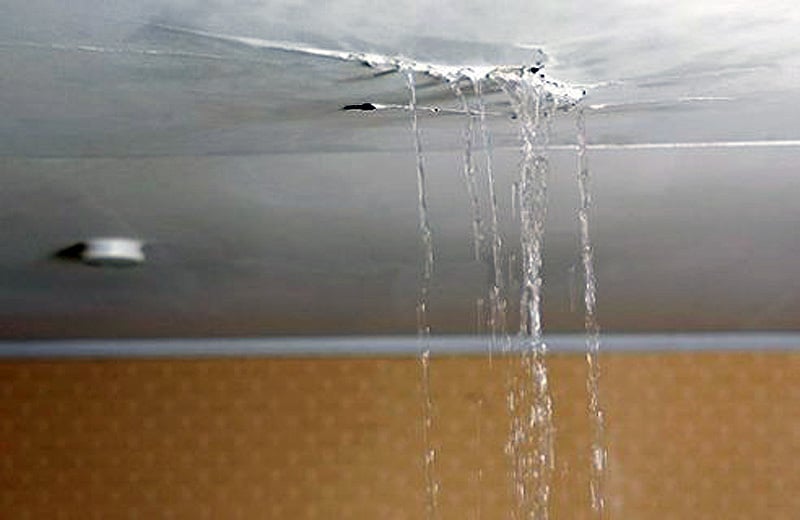Tackling the Six Most Common Water Leaks: Tips for Homeowners
Tackling the Six Most Common Water Leaks: Tips for Homeowners
Blog Article
Almost everyone may have their unique rationale on the subject of Most Common Causes of Leaky Pipes.

Leaks not just trigger waste of water however can additionally trigger unnecessary damages to your residence and promote undesirable natural growth. By looking and also recognizing for everyday situations that create leakages, you can secure your home from future leaks and unneeded damages.
Trespassing origins
Most water leaks start outside the home rather than inside it. You may observe wet spots or sinkholes in your backyard, and that could mean that tree origins are invading water lines causing water to leak out.
Corroded water systems
This may be the cause of discoloration or warping on your water pipes. If our plumbing system is old, consider replacing the pipelines considering that they are at a higher threat of corrosion than the more recent versions.
Malfunctioning Pipe Joints
The factor at which your pipes link is regularly the weakest link in the waterline. Pipeline joints can deteriorate over time, resulting in water leakages. Regrettably, most of pipeline joints are not quickly visible. If you have loud pipes that make ticking or banging noises, especially when the hot water is turned on, your pipeline joints are most likely under a great deal of stress. It is suggested to have your plumber inspect your system annually.
Instant temperature adjustments.
Extreme temperature level adjustments in our pipes can trigger them to increase as well as get all of a sudden. This development as well as tightening might cause fractures in the pipelines, specifically if the temperature are listed below cold.
Poor Water Connectors
At times, a leakage can be triggered by loosened hose pipes and pipes that provide your home appliances. In instance of a water links leak, you might see water running directly from the supply line or pools around your home appliances.
Clogged Drains
Blocked drains pipes might be irritating and inconveniencing, however they can in some cases end up triggering an overflow resulting in break pipes. Maintain eliminating any materials that may drop your drains that could obstruct them to stay clear of such aggravations.
All the above are root causes of leakages but not all water leakages result from plumbing leakages; some leaks may come from roofing system leakages. All leaks need to be repaired right away to prevent water damage.
Leaks not just create waste of water but can likewise trigger unnecessary damage to your residence as well as advertise undesirable organic growth. By recognizing and also looking for daily circumstances that trigger leakages, you can protect your house from future leakages and also unneeded damage. Today, we will certainly look at 6 leakage creates that may be causing your pipes to drip.
At times, a leakage can be triggered by loose tubes as well as pipes that supply your appliances. In situation of a water connections leakage, you might discover water running straight from the supply line or pools around your home appliances.
TYPES OF WATER LEAKS YOU SHOULD BE FAMILIAR WITH
Shower Fixture Water Leaks
If you notice a water leak near your shower fixture, perform an inspection to confirm if you are able to find broken caulk lines. As your shower fixture becomes older, it is not uncommon for water to leak onto the other side of the frame. To fix this type of plumbing leak, scrape off the old caulk and run a new bead of it around the shower fixture to seal up any fractured crevices and holes.
Bathtub Drainage Water leaks
To fix this type of leak in a bathtub, remove the drain flange and clean it. Next, you should also remove the rubber gasket located beneath the tub’s drain hole. Buy a replacement gasket that matches the old version and install it in the same location. Once the drain flange and rubber gasket are installed, apply a small amount of silicone caulk to the drain to prevent water leakage below your tub.
Water Pipe Leaks Behind Walls
Issues such as discolored grout and loose shower tiles may be caused by a water pipe leak behind the walls in your bathroom. To fix this plumbing leak, you will be required to remove the tiles, grout, or caulk in your shower. Once the tiles in your shower have been removed, perform an inspection of the drywall to confirm if it’s moist or wet. If you notice water marks or mold on the wall, this is an indicator of a water pipe leak.
Toilet Leaks
Nobody likes a toilet leak. It can cause water damage to the subfloor, joists, or even the ceiling in the room below. To combat this type of water leak, you will need to reinstall your toilet with a brand new ring of wax. If the toilet sits uneven, be sure to add toilet shims to correct the issue. Do you notice a broken bolt slot or flange? We recommend performing a new metal flange installation to remediate this issue.
Sink Water Leaks
To prevent damage to the beautiful counter tops in your kitchen or bathroom, tighten the base of your sink to prevent a water leak. Next, scrape away any old caulk around the sink and apply a fresh coat. Prior to using the kitchen or bathroom sink, you will need to secure the fixture to the countertop with the clips located beneath the sink rim to prevent a water leak.
https://www.fenwickhomeservices.com/blog/6-types-of-water-leaks-you-should-be-familiar-with/

I am very focused on How to detect water leaks in your home and I really hope you enjoyed reading the new post. Are you aware of another individual who is fascinated with the subject? Be sure share it. Thank-you for taking the time to read it.
Call Today Report this page